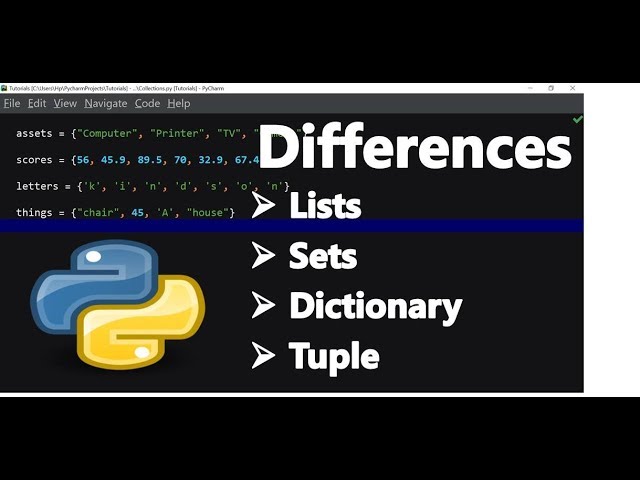Tuple, Set, and Dictionary
Postado 2024-07-16 21:35:59
0
8K

These are all fundamental data structures used to organize information in programming. Here's a breakdown of each:
Tuple:
- Ordered collection of elements, similar to a list.
- Elements can be of different data types (strings, numbers, etc.).
- Immutable: Once created, you cannot change the elements within the tuple.
- Used for representing fixed data like coordinates (x, y) or product details (name, price, stock).
Set:
- Unordered collection of unique elements.
- Elements can be various data types.
- Useful for storing unique items and performing set operations like checking membership or finding differences between sets.
Dictionary:
- Unordered collection of key-value pairs.
- Keys must be unique and immutable (often strings or numbers).
- Values can be any data type.
- Used for storing data where you need to access it by a specific key, like phone numbers in a phonebook (key: name, value: phone number).
Here's a table summarizing the key differences:
| Feature | Tuple | Set | Dictionary |
|---|---|---|---|
| Order | Ordered | Unordered | Unordered |
| Mutability | Immutable | Mutable | Mutable |
| Duplicate Data | Allowed | Not Allowed | Not Allowed (for Keys) |
| Access Method | By index | By membership | By key |
Pesquisar
Categorias
- Technology
- Educação
- Business
- Music
- Got talent
- Film
- Politics
- Food
- Jogos
- Gardening
- Health
- Início
- Literature
- Networking
- Outro
- Party
- Religion
- Shopping
- Sports
- Theater
- Wellness
Leia Mais
Cybersecurity
Cybersecurity involves protecting computer systems, networks, and data from digital attacks,...
ECONOMICS DISCUSSION QUESTIONS
ECONOMICS DISCUSSION QUESTIONS
Web Development Best Practices
Web Development Best Practices: A Comprehensive Guide
Web development is an ever-evolving field,...
Handling Exceptions, and Multiple Handlers
Handling Exceptions with try-except
An exception is an event that disrupts the normal...



